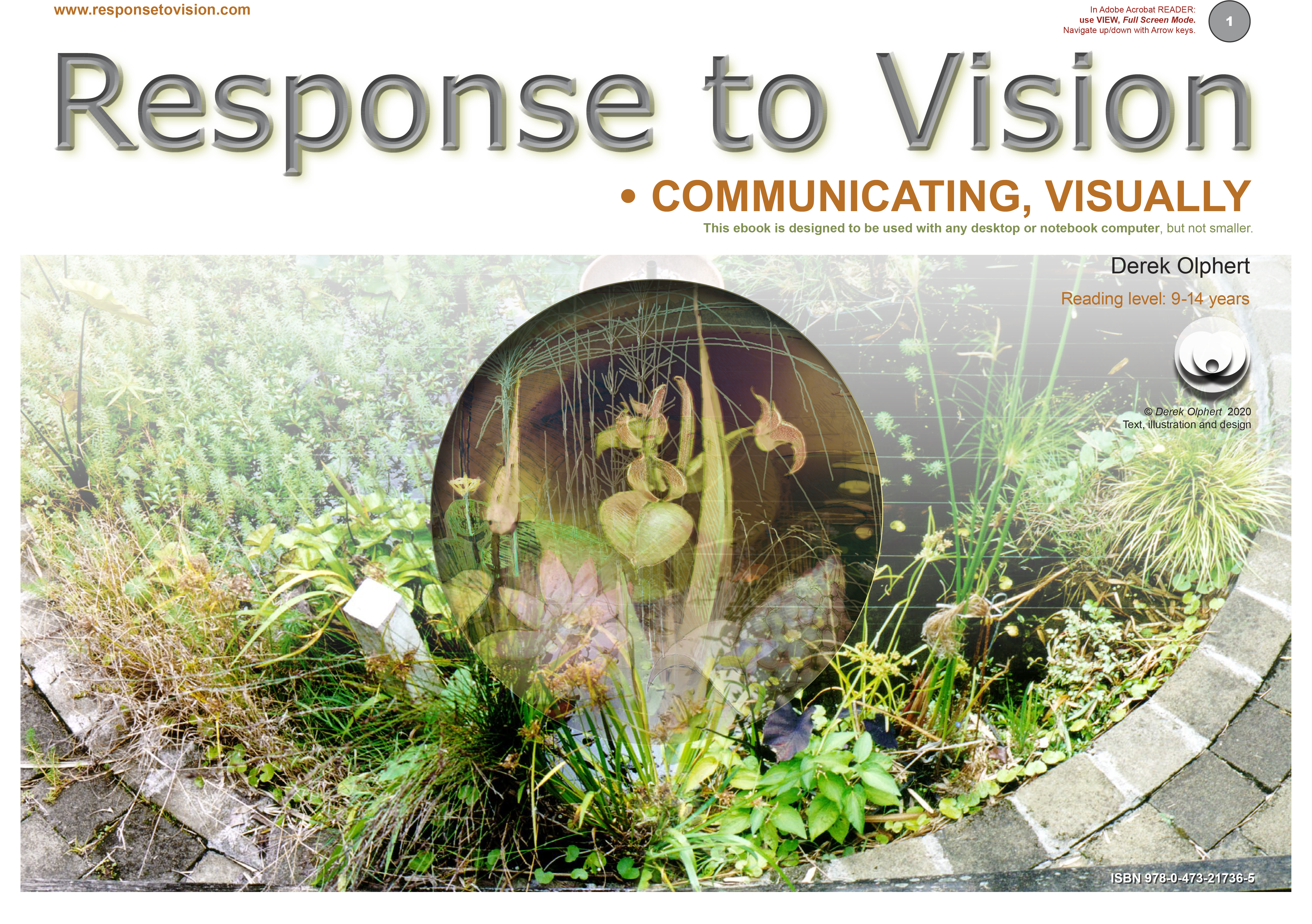
The ebook, Response to Vision • COMMUNICATING VISUALLY, is a motivational resource for students from upper Primary, through Intermediate, to lower Secondary school. It offers a unique approach to learning notably in Science, English and the Visual Arts. The emphasis is on the process of gathering information and using this to communicate, particularly visually.
(Download – 3 PDF files)
(Please scroll down to find ‘Opinion’ – ART EDUCATION Going or Gone?)
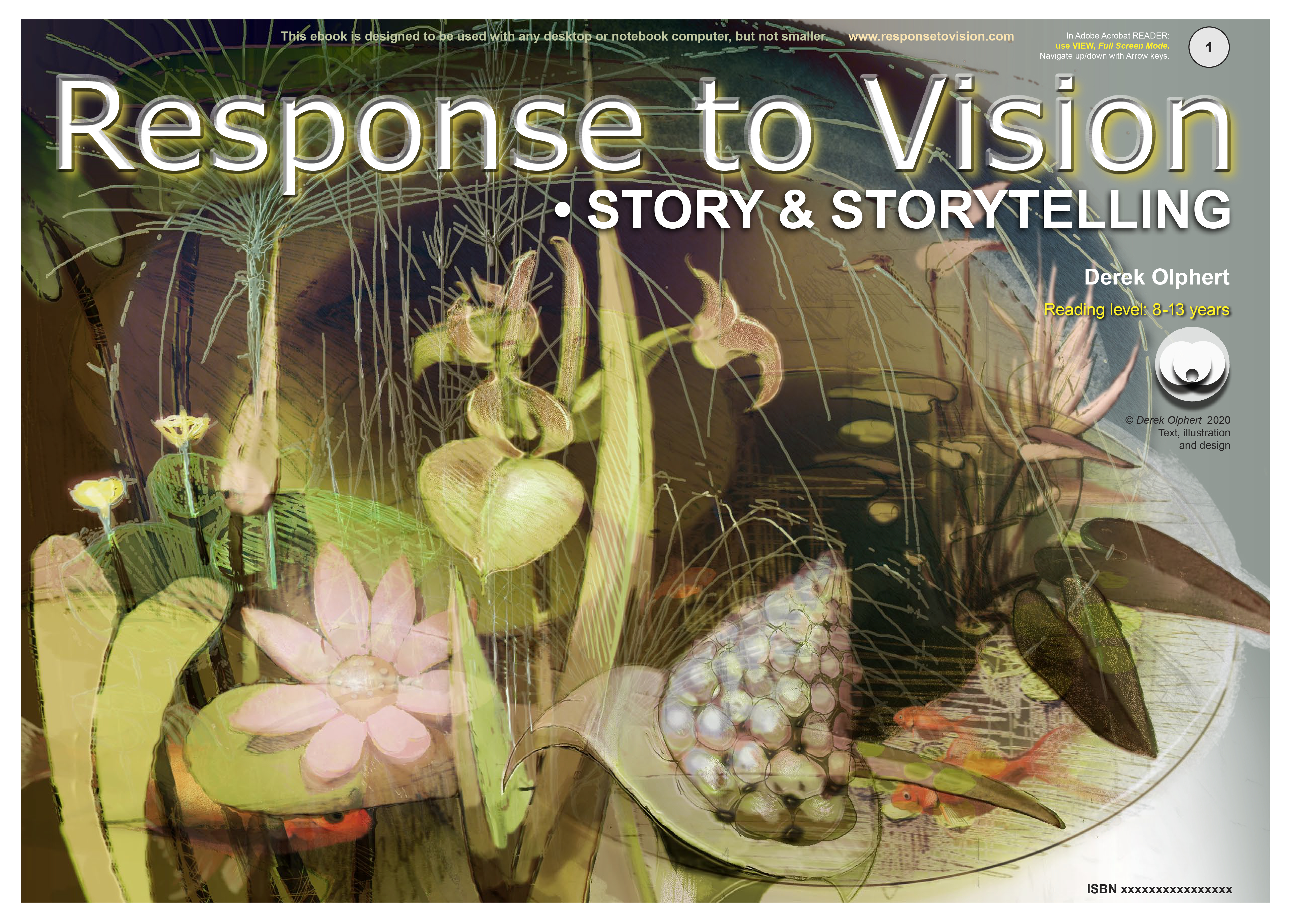
Response to Vision • STORY & STORYTELLING is a development of the Part C Story from RTV • COMMUNICATING VISUALLY. It shows how the initial Seeing provides a base for both text and illustration. How ideas are developed is modelled using examples of work in progress through the stages of Shaping and Making. It is unique in that it not only shows the finished illustrated Story but samples of the evolving text and images.
(Download – 3 PDF files)
For further information, see CONTACT.
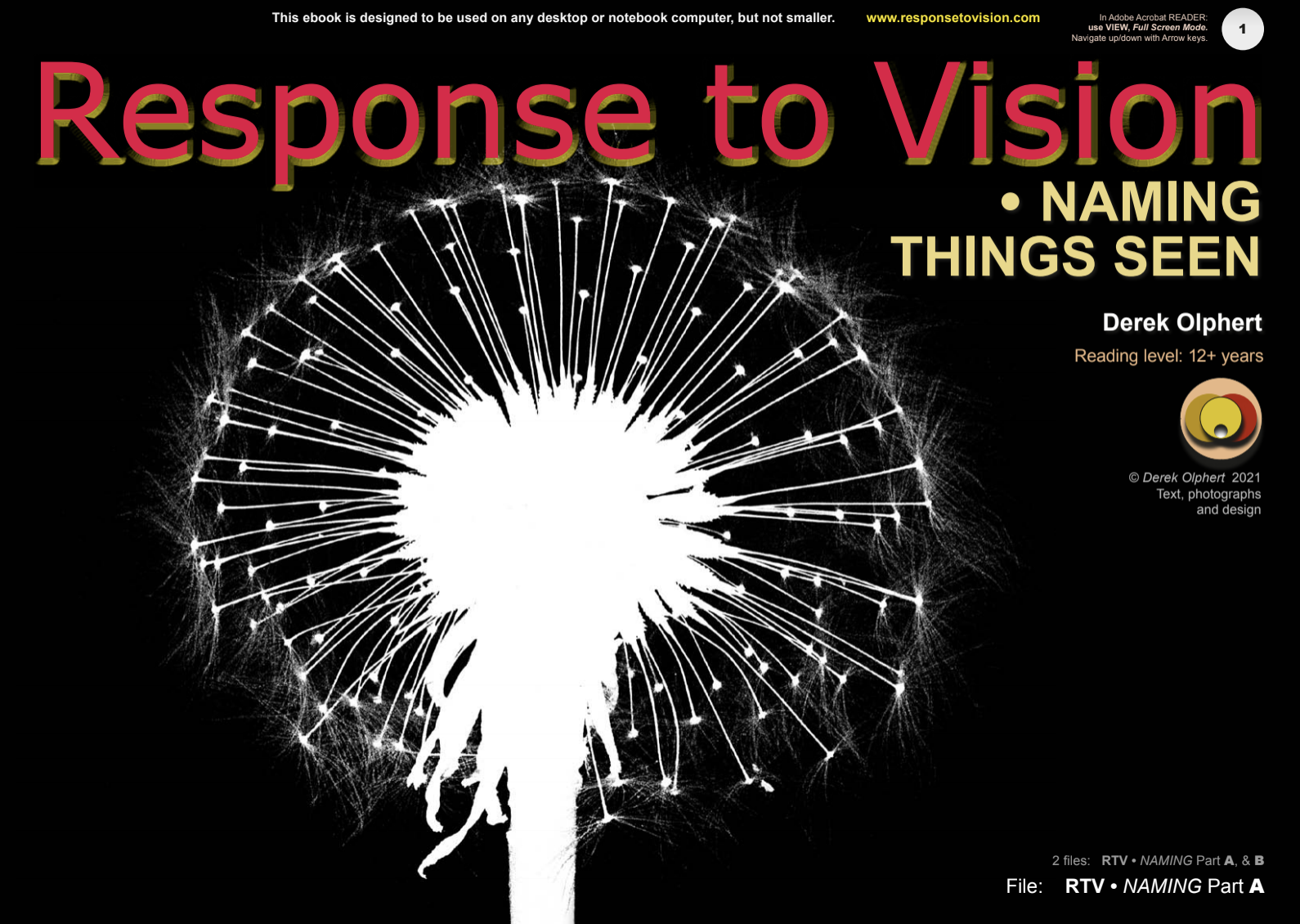
Response to Vision • NAMING THINGS SEEN is an extension of
• COMMUNICATING VISUALLY, Naming. It introduces the Visual Vocabulary needed to visually explore the natural and made things of the environment.
It covers Common Names, and especially associated Visual Ingredients under the sub-headings: Effects, Organisation, and Influences.
The ebook structure is in two parts: Introduction and Part A which apply Naming to the focus of a Pond; and Part B which comprises several hundred images covering the areas of Home, Beach, Countryside and City. These are additional starting points for applying Visual Vocabulary.
(Download – PDF)
NOTES FOR ALL EBOOKS
These three ebooks have been designed to use digital technology to assist student learning both within the traditional school and at home.
The approach used:
- recognises the benefits of self-directed learning,
- emphasises the importance of direct observation to establish an information base,
- promotes an understanding of the process involved with responding to gathered information,
- acknowledges the importance of an integrated approach to learning,
- and that some students respond better to visual rather than verbal processing,
- but all should understand how to evaluate their own learning.
These three ebooks are only available from this website.
Following purchase, they can be downloaded as PDF files for use within the home, or school / tertiary institution local server network.
Copyright applies – distribution outside the stated areas is prohibited.
The ebooks should open on a desktop or notebook computer – not a smaller digital device.
There is a restriction on the copying of text or images, or in any way altering the content.
For screen display, use ‘Full-Screen Mode’.
For further information, see/click CONTACT.
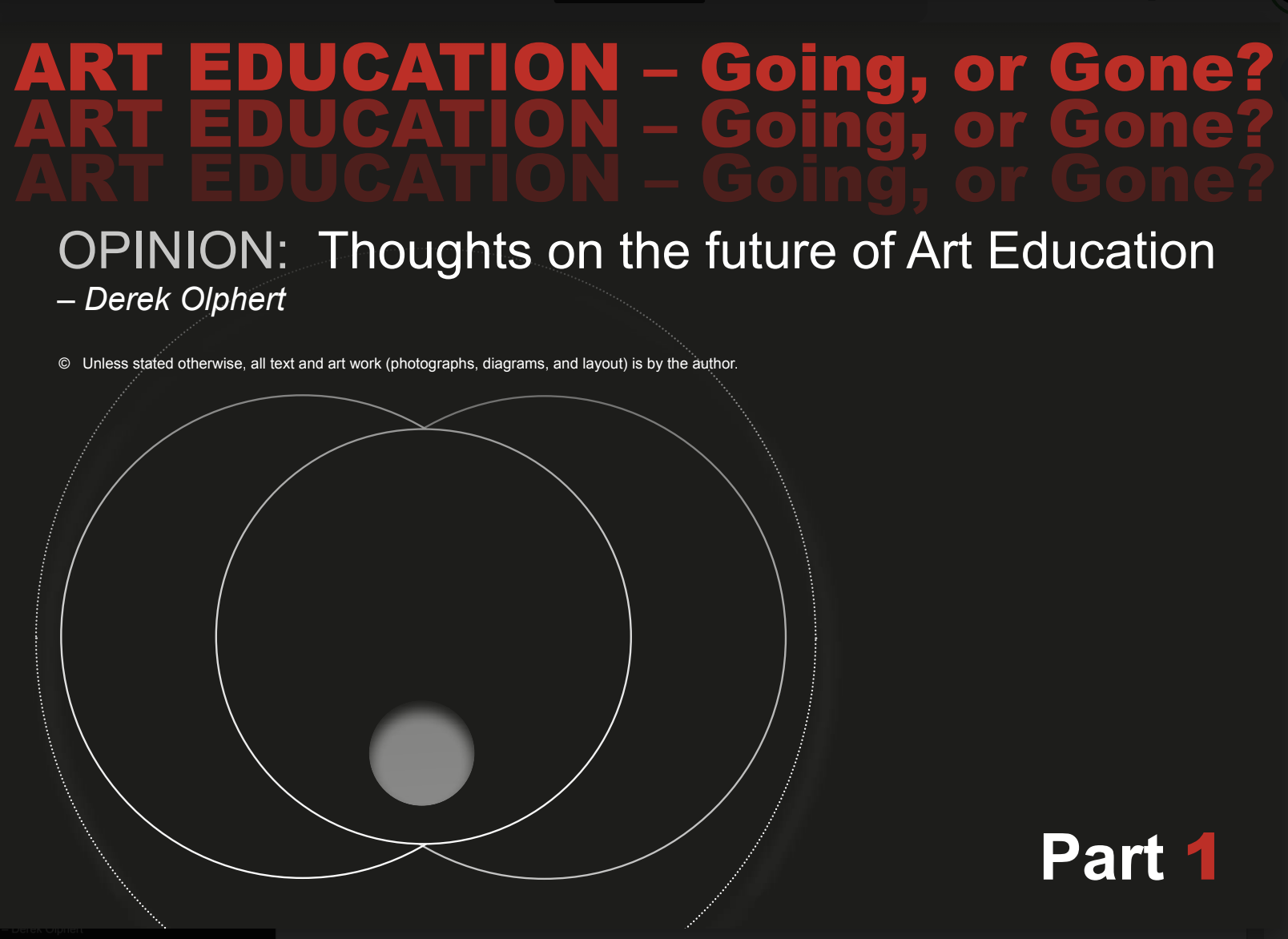
ART EDUCATION, GOING OR GONE?
Thoughts on the Future of Art Education.
This smaller ebook is a detailed overview of the current position of Art Education from ECE to senior Secondary. It identifies changes in the ethnicity of students; insufficient attention on Primary school Art; fragmentation in Secondary courses: inadequate training of Teachers; lack of professional support; a Curriculum Statement that promotes Fine Art at the expense of general Visual Literacy, and demands unwarranted conceptual expectations of younger students ... notes the lack of overall educational leadership, and reveals new curriculum areas clamouring for attention at the expense of Art.
FREE. Comprises PDF with 39 ‘A3 equivalent pages’.
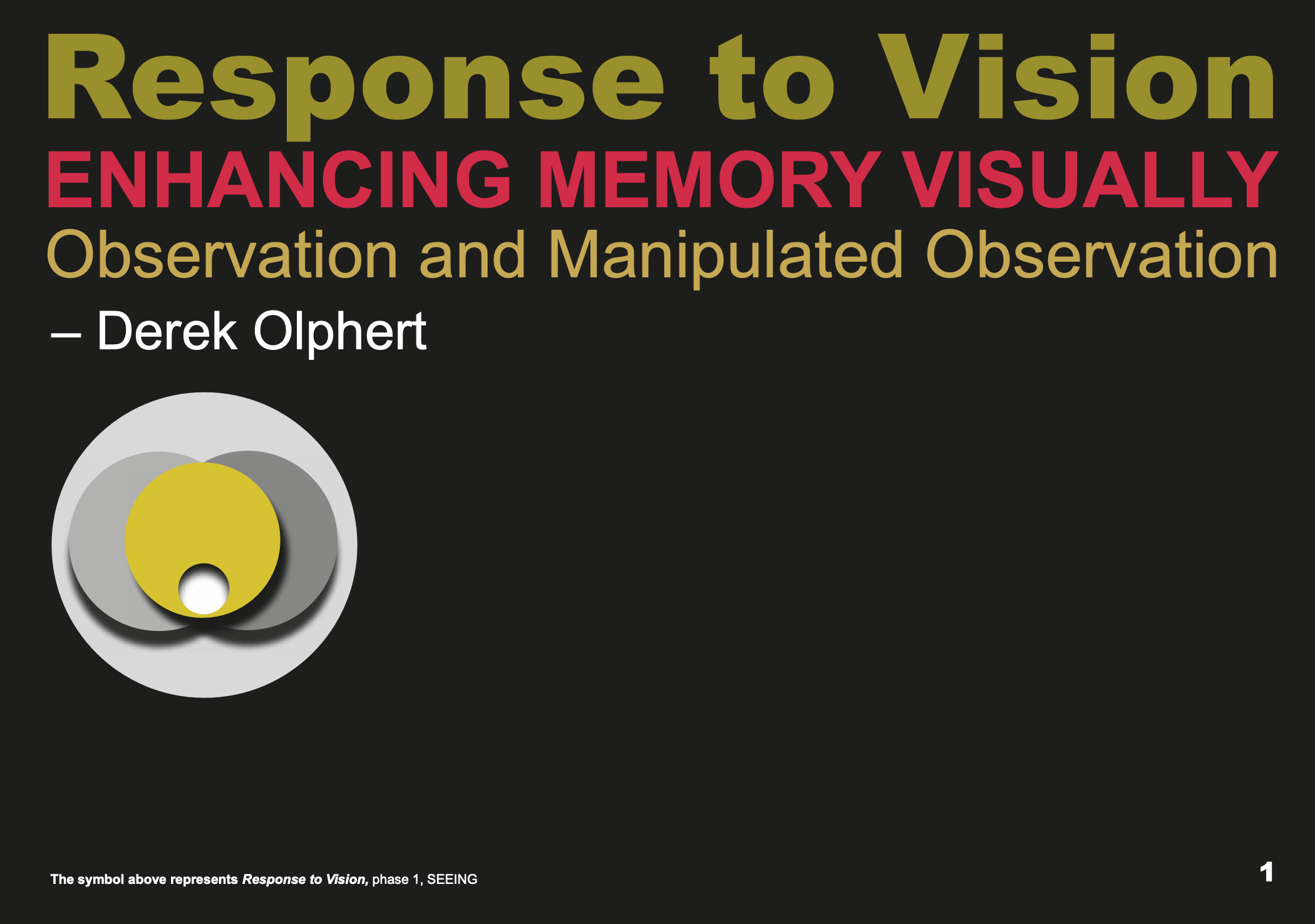
WORKSHOPS Enhancing Memory Visually
This project is an extension of RTV • COMMUNICATING, Making. It shows how re-stating images in different conventions can enhance memory.
FREE.
Both are of particular interest to: Secondary Art Faculty Heads, University Faculties of Teacher Education, Curriculum Planners, Policymakers.

